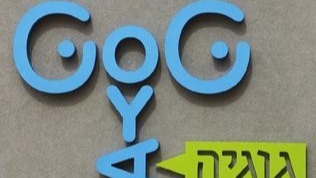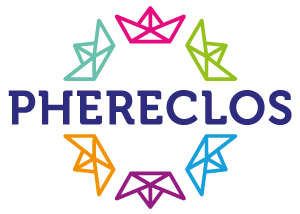GOGYA Centre
- Israel,Whole country
- 2015

| Time frame | |
| Categories | |
| Level of Schools | |
| External Partners | |
| Type of Schools | |
| URL | |
| Number of Schools involved | |
| Number of Schoolheads involved | |
| Number of Teachers involved | |
| Number of Students involved | |
| Number of Parents involved | |
| Number of External Partners involved |
GOGYA Centre first offers a diverse learning experience to teachers to immerse them in innovative learning and thus teaching methods. Teachers then can bring in their students and experiment with their own teaching for themselves to find what suits them best, and for students to experience different teaching methods and styles and to explore what supports their learning best. Teachers are also offered all kinds of tools at the GOGYA Centre and the transformation of schools also means that certain tools, especially furniture for non-frontal teaching and experimenting, are provided.
The ultimate aim is to ensure that children in classrooms are curious, not passive listeners. They aim for teachers to explore new, innovative teaching and learning methods that suit their personality and in turn to offer the same to children.
The GOGYA Centre started the project in 2015 focusing on STEM, and since then they have widened their activities to other disciplines, parent engagement and a growing number of schools.
GOGYA Centre first offers a diverse learning experience to teachers to immerse them in innovative learning and thus teaching methods. Teachers then can bring in their students and experiment with their own teaching for themselves to find what suits them best, and for students to experience different teaching methods and styles and to explore what supports their learning best. This happens in a shared, open learning space with a number of teachers offering their teaching to children of a certain age group. There will be more traditional frontal methods, group work, project work, etc. Children are free to join and abandon groups to find the methodology best suiting their learning needs. They focus mostly on STEM teachers, but also offer services to parents and other teachers.
Once a school’s STEM teachers are on board of the experiment, trained and experienced the centre with their students, AMIT offers the necessary (not very substantial) funding for transforming old school buildings into open learning spaces.
Teachers’ perception of their own job improves, and thus teachers´ well-being and retention, too.
Student learning outcomes increase as a result of person-centred approaches and the choice of methods. Inclusiveness is also increased as the schools are more able to cope with student diversity.
I find it inspiring for two main reasons: on the one hand, it is built on a supported mindset change of teachers, and on the other hand, it results in an in-depth change in the learning of a high number of students with very little actual investment.
Teachers are introduced and trained in a number of innovative educational concepts, and they are free to choose the one(s) they want to implement in their own daily practices, while professional support is offered for all.
The reality of old school buildings is often an obstacle in the way of learning transformation. Innovativeness of GOGYA lies in the gradual introduction of new methodologies through personal experience, supported implementation and physical transformation of their own teaching/learning space.
Teachers are offered all kinds of tools at the GOGYA Centre and the transformation of schools also means that certain tools, especially furniture for non-frontal teaching and experimenting, are provided.
Teachers are the main drivers for change, their experience and decisions regarding the best teaching methods for themselves and their students directly influence funding decisions of AMIT, and decisions of school heads on making changes.
This transformation was driven partly by the fact that AMIT schools in Israel have a much higher student diversity than usual. The GOGYA methodology ensures an inclusive teacher approach to diverse student needs, abilities and interests.
GOGYA encourages a shift from subject silos to collaborative teaching not only between teachers of the same subject, but also across domains, especially STEM domains.
GOGYA uses research evidence and new developments in developmental psychology, didactics, subject teaching and collaborative methodologies for fostering the modernization of teaching in schools in the AMIT network.
The methodology is built on collaboration among teachers, treating students as the main decision makers of their own learning, and this drives activities in each participating school.
It is the teachers’ experience that drives future funding and transformation of schools – both physical and methodological. At the same time, students also exercise their own citizenship skills when making decisions about their own learning.
Teachers who participated form a mutual learning network and they are regularly invited to refreshment events and opportunities to exchange experiences as well as inspire each other.
Digital age was the main reality that kicked of the project and they identified a need for teachers’ role to change in this reality. Another citizenship aspect is that students have a high level of ownership and related freedom of decision making. Teachers also exercise citizenship skills when co-designing teaching and learning in their own school.
There seems to be a high level of cooperation among GOGYA, schools, teachers and students. They have also understood lately that they need to train teachers for better parental engagement and make it possible for parents to experience different learning methods, too, to become fully supportive of the initiative.
It supports AMIT schools to rethink their educational offers and use the GOGYA services for transformation and modernisation, happening primarily as a peer-learning process.
GOGYA employs a team of expert: teachers, teacher trainers, researchers, parent engagement specialist, to implement the programme at the centre and support implementation at schools too.
They collect teacher and student feedback, but also monitor student achievement through standard methods, such as comparing exam results.
